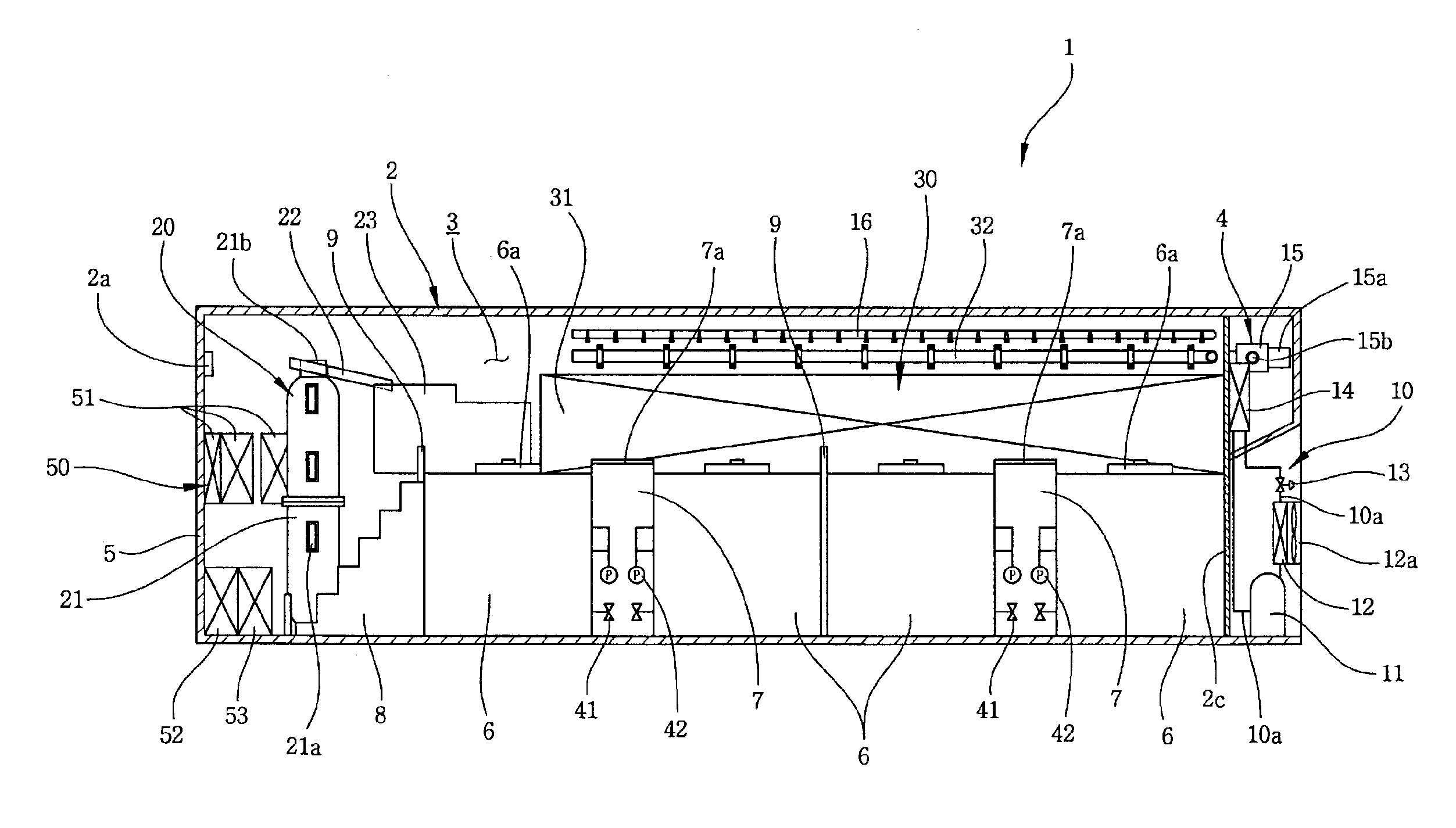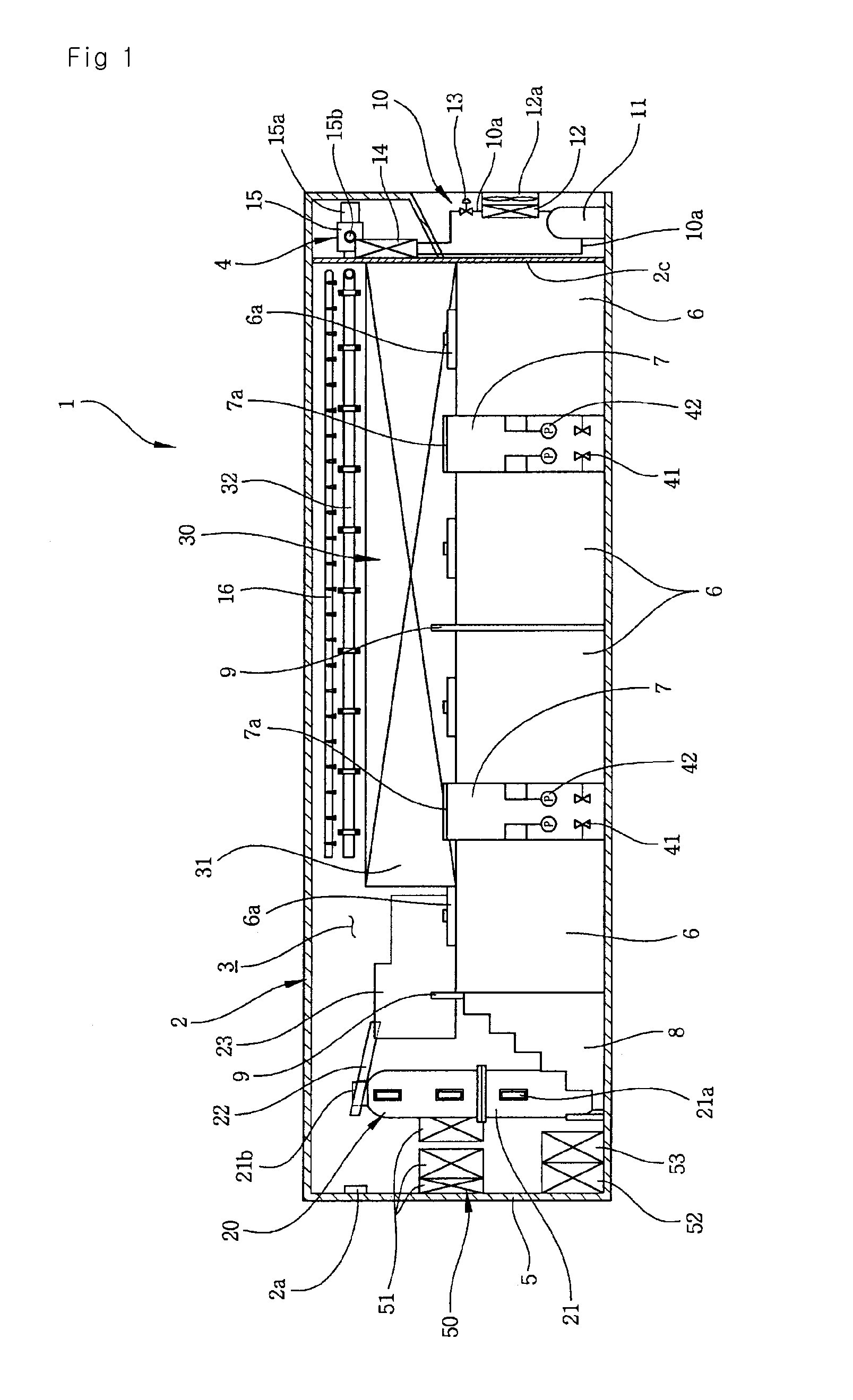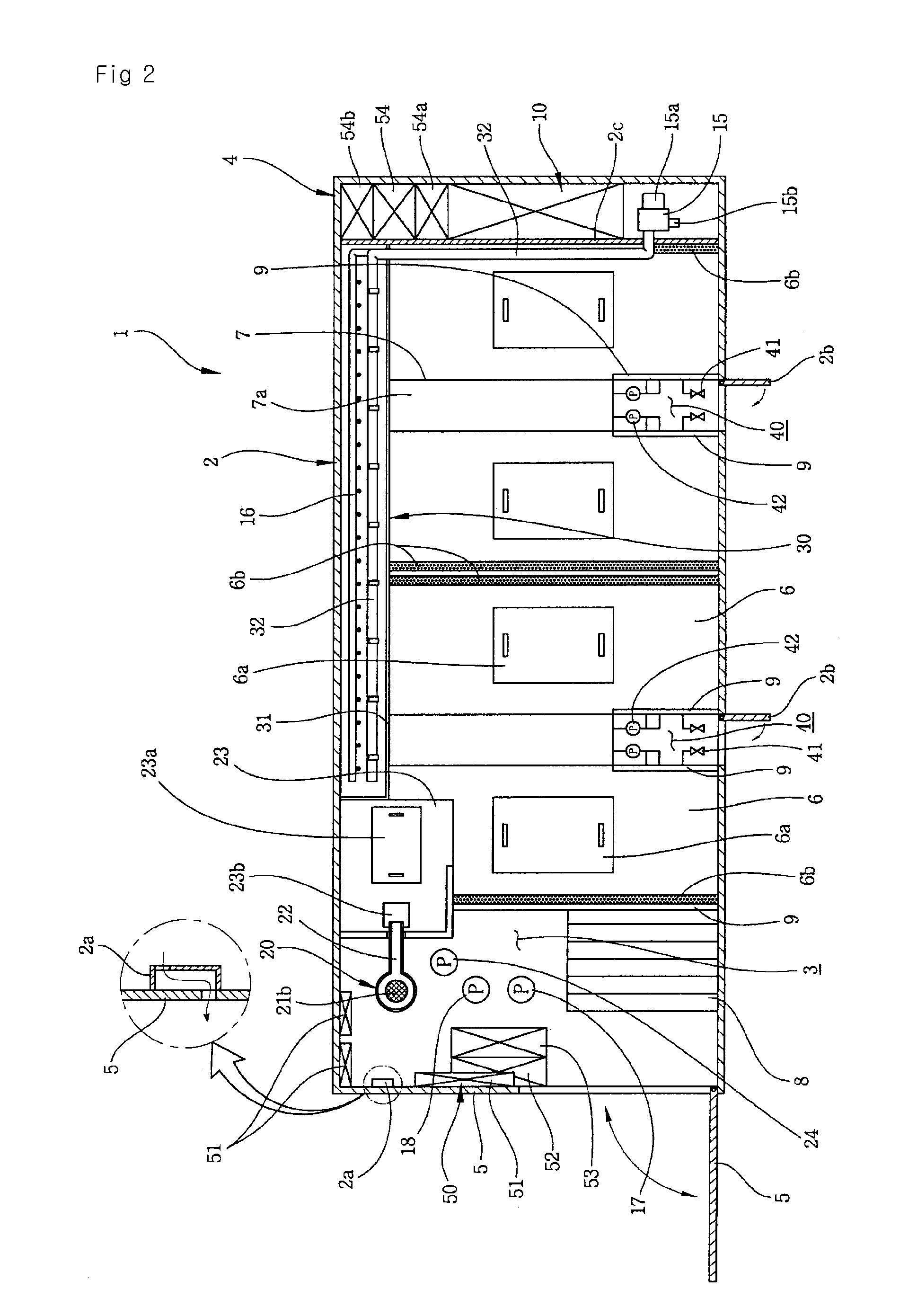This fact is limited to the application of International Standard with respect to importation / exportation goods.
Since logistics costs for transporting live fish from a live fish producing district to the consumer is too high, purchase price of live fish is highly increased.
Since the number of live fish is high and it is hard to survive live fish by 24 hours in the course of transporting, the live fish may be transported for a relatively short distance.
For transporting live fish over exceedingly long distances and from one country to another, logistics costs for transporting live fish is too high.
The drawback of the conventional apparatus for cooling live fish is that a long time occurs to install or repair the apparatus, and thereby resulting in increased costs.
To conclude, the conventional process for manufacturing the conventional live fish tank is quite complicated and difficult to perform.
In the course of installing the live fish tank in the live fish container, the process for disposing and fixing the evaporator at the bottom surface or the side wall surface of the live fish tank is quite difficult to perform.
In the meantime, the evaporator may comprise relatively expensive titanium having the corrosion resistance.
Since long refrigerant pipes are disposed as a zigzag passageway at the bottom surface or the side wall surface of the live fish tank or in the interior of the wet-type filtering tank, this leads to the dissipation of resources and to the increase of costs.
Meanwhile, when live fishes are loaded or unloaded in the course of transporting live fishes by using a trailer, they are likely to be damaged by the surface of the evaporator protruding toward the live fish tank due to the vibration or the shock to be applied to the live fish container.
If the live fish receives a wound, it gets diseased and thereby value of commodities for the live fish deteriorates.
Furthermore, since the surrounding temperature of the refrigerant tube for the evaporator is too lower than the temperature of live fish, the live fish is likely to get diseased or to die by getting stressed.
Meanwhile, there is a possibility that great quantities of scales are formed along the surface of the refrigerant pipe for the evaporator.
This leads to the contamination of the live fish.
Also, this leads to the decline of the heat exchanging effectiveness and the refrigerating performance.
Therefore, it is difficult to reduce the temperature of live fish in the course of transporting live fish.
As a result, it is hard to transport live fish over long distances for a long time in a state that the live fishes contained in the live fish container are maintained with ensuring the safety and the security thereof.
This leads to increased costs in the manufacturing process of the apparatus for refrigerating live fish.
Since there are many welded portions and connected portions between refrigerant pipes, the refrigerants are likely to be leaked there through due to the shock and the vibration applied to the live fish container during the process of loading or unloading live fishes or during the transportation of the live fish container by using a trailer.
If the refrigerants are leaked through the welded portions and the connected portions between refrigerant pipes, live fishes may be died en masse.
Since the welded portions and the connected portions between refrigerant pipes exist in great numbers, it is difficult to completely check the leakage of the refrigerants and it is hard to repair the damaged refrigerant pipes.
Since a large number of live fishes are stored at high density in the live fish tank of the live fish container, it is difficult to effectively remove fine contaminants or protein components from the live fish water.
Since a variety of harmful ingredients resulted from live fish excrement, more particularly, ammoniac nitrogen components may be rapidly accumulated in the live fish at a high concentration, it is hard to effectively remove the harmful ingredients by only using the conventional wet-type filter media.
In this case, the total weight of the live fish filtering tank including the filter media is too great, thereby resulting in the excessive weight of the live fish container.
In other words, the excessive weight over the limit weights of 24 ton in the feet container or of 30 ton in the 40 feet container may be occurred, so that it is likely to break the rules with respect to the weight restrictions of live container.
Accordingly, it is hard to reduce the logistical cost with respect to the transportation of live fish.
As a result, the filtering efficiency is relatively low so that it is necessary to increase the volume occupied by the filter media so as to obtain a sufficient filtering capability.
The ammoniac nitrogen components produced by combining with the nonionic ammonia can pass through a cell-wall of fish and can damage the live fish under even low concentration such as 2 mg / L or 2 ppm.
Furthermore, the ammoniac nitrogen components may oxidize to the nitrate nitrogen or the nitrite nitrogen and they exhaust the dissolved oxygen in the water.
However, it is impossible to remove these harmful ingredients by only using the wet-type filtering tank having a relatively poor filtering capability.
If a transportation time of live fish by using a live fish container becomes long, the live fish is likely to be getting a certain disease due to the harmful ingredients accumulated in the live fish, thereby resulting in the death of live fish.
Consequently, the time limit for transporting live fish by using the conventional live fish container is only two days at maximum.
Accordingly, the conventional live fish container is unsuitable for transportation live fish over a long distance for a long time and therefore it is only used for transportation over a short distance for a short time.
This has resulted in high cost of transporting live fish and thereby it has poor productivity.
One drawback of this conventional live fish container is that the control panel, the battery and the inverter of the control part are likely to be easily corroded or damaged due to the internal moisture of the cargo room and thereby resulting in the breakdown or the malfunction of the control part.
Accordingly, there are many problems in the safe transportation of live fish by using the live fish container.
Since it is difficult to effectively cool the heat to be generated during the operations of the electronic control components, the battery and the inverter, the breakdown or the multifunction may be occurred due to the overheating of the control part.
Since a person cannot enter into the cargo room during the transporting of the live fish in the live fish container, it is necessary to perform a manless operation for a long time.
However, the control part installed in the cargo room is likely to be corroded or to be overheated so that it may be breakdown and a fire may be broken out.
As a result, live fishes may be died en masse during the transportation of live fish.
Furthermore, repair and maintenance costs for the control part are excessive.
 Login to View More
Login to View More  Login to View More
Login to View More 


